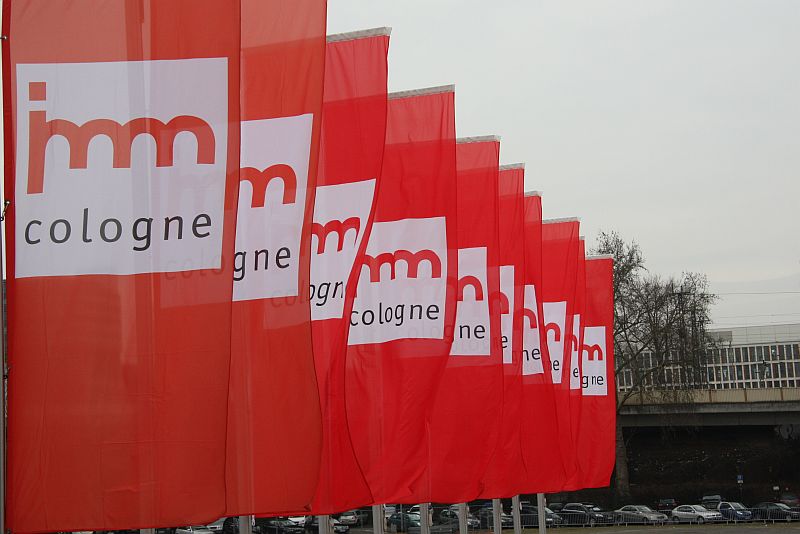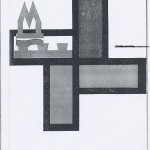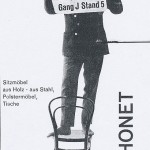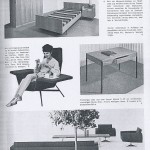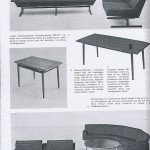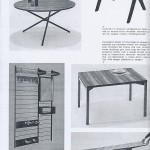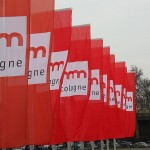IMM Cologne 2012. And 1962.
On Monday January 16th IMM Cologne, Germany’s largest furniture trade fair, opens it doors.
In the coming days we’ll bring you a series of interviews, reports and reviews from the Rhein, but ahead of the show we thought we’d look back at what Cologne 1962 had to offer.
On the one hand, because we think it’s interesting to look back on what the furniture industry had to offer 50 years ago; but also to help place IMM 2012 in context of its heritage.
The International Möbel Messe Köln started in 1949 and was initially a bi-annual event. A concept that not only really appeals to us, but also reminds us of the days when furniture producers didn’t release new products every couple of minutes.
Indeed in their preview of Cologne 1962 the industry newspaper of the day “Möbel Kultur” spoke of the “…creative pause …” since 1960.1 Using creative pause in the positive sense of “chance to reflect on and improve your products.”
For as Nils Holger Moormann reminded us, “Furniture needs time. It must be refined and gradually perfected.”
Judging from the exhibitor list the furniture industry in 1962 was still dominated by wood products from small and medium sized carpentry businesses. The situation was however starting to change. For example, there appeared to have been a very controversial debate in Cologne over the use of this newfangled plastic material for surfaces, especially on kitchen units.
In the years immediately after the war, the principle requirement in Europe was for simple, cheap products to help people refurnish their homes; something we noted in our “Design for Use, USA” post. However, in their review of the Cologne Furniture Fairs up until 1962 Möbel Kultur postulate that despite the planners wishes many Germans, especially those refuges from Prussia, wanted – and bought – sturdier furniture to remind of them of their lives before the war.2 As such the so-called “Gelsenkirchener Barock” was all the rage in 1950s Germany. Large, immobile objects created from tropical woods.
But as this generation aged and ceased to be such an important purchasing group, so too did their influence on the market wane.
Cologne 1962 indicated this generation change was well underway, and there is regular reference in the reviews to furniture in the, modern, “gute Form.” Today we’d probably just call it designer furniture.
But there are also indications that the furniture industry and the Cologne Fair were about to let this particular boat sail off into the future without them. And that, as today, the “gute Form” furniture may have been present. Was however an under-represented segment.
In his review of the event for Form magazine Karlheinz Krug, the magazine’s later much celebrated Editor in Chief, divides the furniture producers of Cologne 1962 into three groups; those who work with competent designers to create individual, innovative products; those who copy the basic form of the designer furniture and produce them cheaper; and those who re-create styles of old.3
An observation that shows that despite any preconceptions that Cologne 1962 must have been a world away from that we can expect to meet 50 years later. It wasn’t really.
Herr Krug, for example, goes on to regret the absence of many important producers, in particular those who through their design orientated approach can be considered shining examples of the modern furniture industry.
He lists Knoll International or Wilkhahn as examples. Fifty years later both are still missing. As are, for example, Magis, Freedom of Creation, Moormann or Vitra.
The last in the list were, somewhat ironically, present in 1962 as a small company taking their first, tentative steps in the global market.
Today the Vitra brand is so well established that one can safely say they don’t need a fair such as IMM.
And for us that remains one of the problems with IMM; too much focus on Karlheinz Krug’s “Group 2” producers and not enough of those from Group 1.
In effect they are still focusing on providing furniture for those customers who want the familiarity of “Gelsenkirchener Barock”, customers who are prepared to pay over the odds for something that they believe confers a certain status upon them because it visually conforms to some perfunctory sense of “style”, “trend” or “luxury”. Rather than challenging the market to offer consumers real quality at a realistic price.
And that despite Herr Ordnung4 stating in 1962 that Gelsenkirchener Barock was in its death throes.
It may still be. But it is obviously just as profitable as ever.
Cologne Furniture Fair 1962 recorded some 65,400 visitors – almost 90% of them from Germany – who viewed products from 868 producers, ca. two thirds domestic, one third foreign.5
Cologne Furniture Fair 2011 recorded 138,000 visitors – with 39% coming from outwith the German borders – who viewed products from 1028 producers. Some 60% non-German.6
Figures that indicate not only a healthy event, but also one that has successfully transformed itself from an essentially domestic affair into an important regional trade fair. And that, despite our objections, there is a real demand for the products the majority of exhibitors sell.
We’ll probably never tire of trying to persuade the organisers to change their format and embrace more innovative high-end design. But we also have to accept that IMM is a commercial fair and must be judged in the first instance on economic results.
Such statistics obviously say nothing about the quality of the goods on offer then or now. Nor will we. Not here. That’s a subject for another post.
And one could be petty and compare the figures with those of Milan – 12,000 visitors and 328 producers at its first edition in 1961; 320,000 visitors and 1283 producers in 2011.7
But that would be really petty.
Reading the reports and reviews from Cologne 1962 – and we can thoroughly recommend them – one is stuck by a certain continuity in terms of themes, topics and opinions. We kept finding visitors from back then criticising or applauding things that mirror our experience and opinions. As such its clear to see that at such a fair it’s not just the furniture that repeats itself at regular intervals.
And in that respect, one thing that really caught our attention was the obvious the “trend” in 1962: light, natural wood colours.
Something we should all bear in mind when we read the mass market press reviews of IMM Cologne 2012…..
- IMM Cologne 1962 Catalogue
- Thonet advert in the 1962 IMM Cologne catalogue
- Some of the new products shown at IMM Cologne 1962 (from Möbel Kultur, No 3 March 1962)
- Some of the new products shown at IMM Cologne 1962 (from Möbel Kultur, No 3 March 1962)
- Some of the new products shown at IMM Cologne 1962 (from Möbel Kultur, No 3 March 1962)
- IMM Cologne
1. “Was bringt Köln 1962?” Möbel Kultur, Februar 1962
2. “1949-1962. Die Möbelformen seit der ersten Kölner Messe” Möbel Kultur, Februar 1962
3. Krug, Karlheinz “International Möbelmesse Köln 1962”, Form, 17, 1962
4. Herr Alfred Ordnung, Chairman of the Furniture Sector in the German Retailer Association
5. “Die Möbelmesse statistisch gesehen” Möbel Kultur, Januar 1962
6. “Facts and Figures” IMM Website http://www.imm-cologne.com/en/imm/diemesse/daten_fakten/index.php. Accessed 09.01.2012
7. “Facts and Figures” Salone Internazionale del Mobile http://cosmit.it/tool/download.php?id=82945&idst=12535 Accessed 09.01.2012
Tagged with: imm cologne, imm köln
